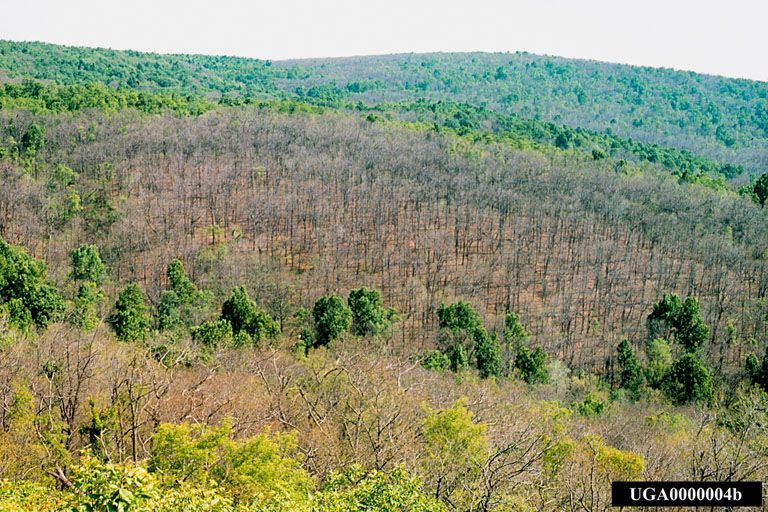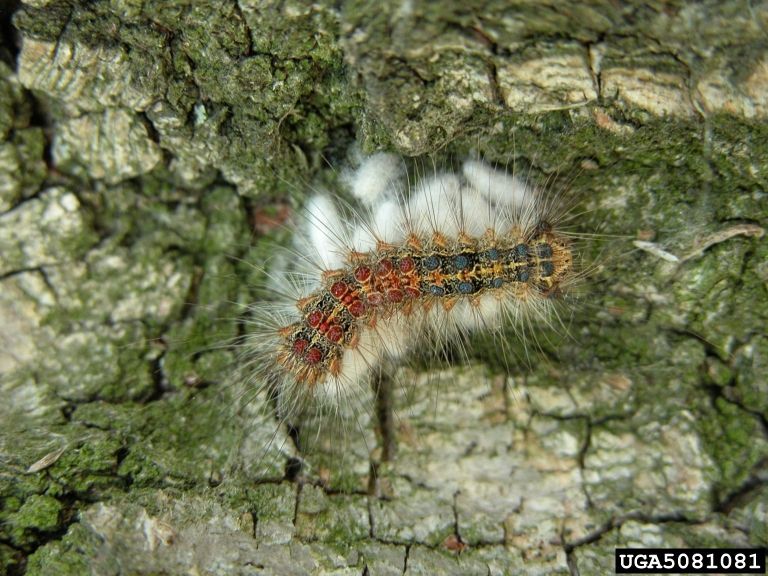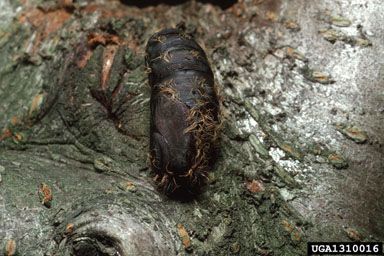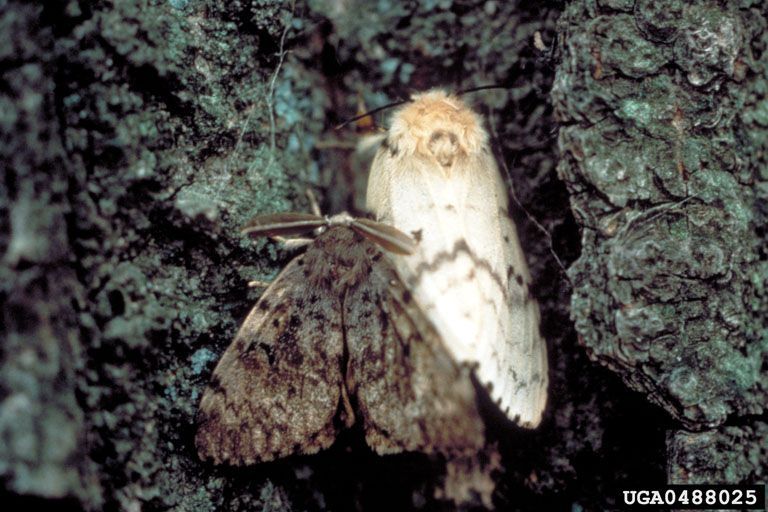Spongy Moths: The Caterpillars Who Take 'Eat Local' Seriously
Next week, February 24 to 28, is National Invasive Species Awareness Week! The term "invasive" is often used by outdoor professionals, but the definition is not often clarified. The US Fish and Wildlife Service describes invasive species as "non-native plants, animals, and other living organisms that thrive in areas where they don't naturally live and cause (or likely to cause) economic or environmental harm, or harm to human, animal or plant health". In short, an invasive species is an organism that is not native and causes harm within the landscape. Michigan is host to several invasive species from aquatic sea lamprey to the terrestrial spongy moth. To be the best environmental steward, being able to identify an invasive species and understanding how to control or report the species can help inform environmental professionals about their management plans as even small insects can have a large impact on the ecosystem.
History
The spongy moth (Lymantria dispar, formerly known as the gypsy moth) originated in Europe and Asia and was first introduced to the United States in 1869 according to MSU Extension. By 1980, the first sighting of this invasive in Michigan occurred in Midland and Clare counties giving way to various outbreaks, the most recent taking place in 2019.
Current Status
This species is now considered invasive by the Michigan DNR and is currently known to range from the northeastern US to Minnesota. The spongy moth has now been established in all counties across Michigan. Being a small insect, looking for indicators left behind by the species can be the quickest way to identify the presence of an invasive. When looking for the spongy moth, signs of infestation can be leaf debris and frass (round fecal pellets) under trees according to the Michigan DNR.
Characteristics
Like many butterflies and moths during metamorphosis, the spongy moth starts as a caterpillar hatching from tan, fuzzy egg masses in April. During the caterpillar stage, the moths are described by the Michigan DNR as having a yellow and black head with five blue and six red spots going down the fuzzy body. These caterpillars grow by feeding on leaves until late June reaching up to two inches long when metamorphosis begins. MSU Extension describes the cocoons of this species as reddish brown which houses the caterpillars during the pupation phase. Once the moth reaches its winged form in July or August, males and females are easily identified from each other due to differences in color and pattern (sexual dimorphism). Male moths are typically smaller reaching about 1.5 inches in length with dark-brown wings and a wavy pattern allowing easy camouflage to tree bark. In contrast, females are larger than their male counterparts with white to cream wings and wavy black markings, however, females can’t fly.
There are a few native caterpillar species that can be mistaken for the spongy moth. The eastern tent caterpillar, while destructive, is a native species to Michigan that does not often completely defoliate trees. This species has a defined white stripe down the center of the back with small blue spots on the side. The forest tent caterpillar has a central row of yellow or white spots with a blue tint to the sides. While the Eastern tent caterpillar produces the silk seen often on tree branches, the forest tent caterpillar and spongy moth do not. Additionally, both tent caterpillars lay egg masses around small twigs of trees instead of directly on the bark. MSU Extension created an informational sheet with distinguishing features between these species.
Conservation
While it may seem like the lack of flight for females would impede the spread of the species making invasion a slow process, there are other ways to expand the range. Small caterpillars can spread to nearby trees as wind bursts can take them up to a half mile from the hatching site. However, the greatest threat is the egg masses which can be located in discreet places of mobile materials like firewood, vehicles, and gear. Due to the ability of humans to travel long distances, this species can reach a larger area quicker than it naturally would.
This non-native species gets its invasive status due to the destruction it causes to native ecosystems. The caterpillar form of the spongy moth, especially during an outbreak, defoliates trees making way for tree mortality due to disease or pests. While the caterpillars feed on many plant species, they are commonly found on oak and aspen, which can be problematic due to the presence of diseases like oak wilt. The conservation implications vary by tree host species as some trees can re-flush new buds to survive the winter if not exposed to disease or other pests. However, other species like conifers (pine trees) can't re-flush and will likely see mortality after defoliation as recognized by MSU Extension. Additionally, outdoor recreation can be negatively impacted by the debris and frass left behind by the caterpillars.

Control
To help trees on your property during times of stress, MSU Extension encourages weekly watering in combination with general care to prevent wounds from tools like weed whips. Additionally, keep your eye out for any stage of invasive species like the spongy moth from the eggs to the adults depending on the season. Egg masses can be mechanically controlled by scraping the clumps into a container of soapy water, burned, or buried. Outdoor professionals use pheromone traps to attract males for surveys in detecting newly established populations, however, this is not an effective method of control at the population level. Biological control methods include native predators like mice, birds, and other insects that can feed on spongy moths. Additionally, some diseases directly impact the spongy moth populations, helping to control numbers in cycles of outbreaks every two to three years. Chemical control for this species includes the use of Btk (Bacillus thuringiensis) which is used to cover the leaves of host trees to target caterpillars looking for a meal after hatching. While Btk spraying can be done privately or professionally, it is critical to get the leaves in the canopy covered for the best control of the population as the chemical works through consumption according to MSU Extension. This pesticide is considered not harmful for many other species from mammals to pollinators making the control simple compared to conventional insecticides with a general reach. Additionally, MSU Plant and Pest Diagnostics can be a useful tool in identifying effective treatments for target species on private properties.
Learn More
As with all invasive species, the public plays an important role in the field by reporting sightings to MISIN online or on the app. Reporting tools like these are used when assessing the control and elimination of the species from an area to help conserve the native ecosystem. The public can also prevent the spread of the spongy moth by checking and cleaning outdoor materials before transporting, including vehicles. Additionally, when camping, use only local firewood at the fire pit to prevent the transport of eggs to or from another location. Awareness of the species and how it spreads will help control future outbreaks. More information on control of the spongy moth can be found on the DNR website. MSU Extension breaks down the lifecycle of the spongy moth for further reading here. The USDA also offers information on identification, spread, and prevention. Invasive species, whether they are plants or wildlife, harm the native habitat and ecosystem. To join the fight against some invasive species, consider joining us at one of our On the Ground (OTG) invasive removal projects across the state this year by checking out our website for upcoming events.







